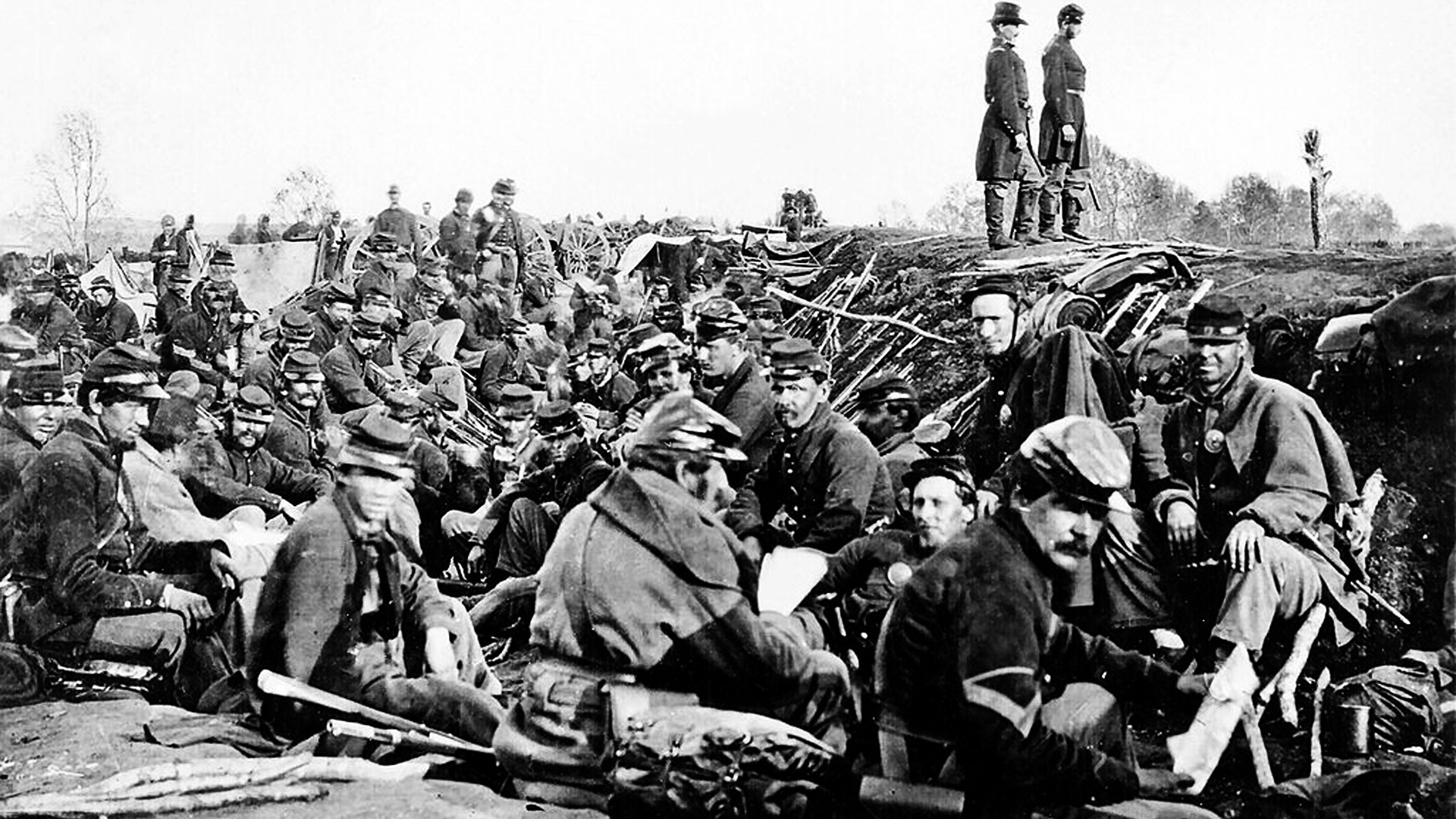The American Civil War – A Nation Torn Apart

The American Civil War was fought over slavery, states’ rights, and the survival of the Union.
The Dive
The Civil War began in April 1861 when Confederate forces fired on Fort Sumter, but its causes had been building for decades. Disputes over slavery’s expansion into new territories, the balance of power between state and federal governments, and competing economic systems created deep divisions. Failed compromises like the Missouri Compromise and Kansas-Nebraska Act showed that political negotiation could no longer hold the Union together, and secession turned political conflict into armed war.
From the very beginning, the Union and the Confederacy entered the war with sharply different advantages and challenges that would shape the entire conflict. The North’s larger population meant it could field more soldiers and replace losses more easily, while its factories and shipyards produced weapons, ammunition, and supplies on a massive scale. An extensive railroad network kept Union armies supplied and mobile. The South, on the other hand, relied on battle-tested military leaders, the motivation of defending their own land, and the belief that their cotton exports could win European allies. These strengths and weaknesses drove each side’s strategy, whether it was the Union’s Anaconda Plan to cut off the South’s resources or the Confederacy’s hope to wear the North down in a long war.
As the war dragged on, it became a 'total war,' involving not just armies but entire populations and economies. Both governments used conscription to draft soldiers, retooled industries for military production, and spread propaganda to maintain public support. Campaigns like Sherman’s March to the Sea aimed to break the South’s will to fight by destroying railroads, factories, and food supplies, showing how civilian resources had become legitimate military targets.
Several battles shifted the course of the war. Antietam (1862) was the bloodiest single day in American history and stopped Lee’s invasion of the North, giving Lincoln the political momentum to issue the Emancipation Proclamation, which reframed the war as a fight to end slavery. Gettysburg (1863) marked another turning point, inflicting heavy Confederate losses and forcing Lee’s retreat, while the Union victory at Vicksburg the same year gave control of the Mississippi River, splitting the Confederacy in two.
The human cost of the war extended beyond the battlefield. Soldiers faced not only combat but disease, malnutrition, and months of hardship. Women stepped into roles as farmers, business owners, nurses, and even spies, reshaping gender expectations. Enslaved people seized opportunities to escape to Union lines, provide intelligence, and directly contribute to the war effort, linking the fight for Union victory with the fight for freedom.
The Civil War became a proving ground for new technologies and tactics that changed the nature of warfare. Ironclad warships rendered wooden navies obsolete, repeating rifles and the Gatling gun increased firepower, and the telegraph sped military communication. Railroads enabled rapid troop movement, while trench warfare previewed the stalemates of World War I. These innovations made the conflict more deadly but also marked the beginning of modern industrial war.
The war ended in April 1865 with Robert E. Lee’s surrender to Ulysses S. Grant at Appomattox Court House. The Union’s ability to coordinate multiple armies, exploit its industrial advantage, and maintain political leadership under Lincoln proved decisive. But the victory came at a staggering cost—over 600,000 dead, vast destruction across the South, and a legacy of unresolved racial and political tensions that would define Reconstruction and beyond.
Why It Matters
The American Civil War was the defining conflict of the United States, testing whether the nation could survive its own divisions. The war preserved the United States as one nation and abolished slavery, yet it left behind deep divisions. Understanding the war’s causes, strategies, and consequences helps explain later struggles over civil rights, federal power, and the meaning of equality in America. Studying it forces us to confront the dangers of political breakdown, the price of war, and the resilience required to rebuild a fractured country.
?
Why did the Civil War escalate into a 'total war' and what did that mean for civilians?
How did the Battle of Gettysburg change the momentum of the war?
In what ways did technological innovations shape the conflict?
How did the experiences of women and enslaved people differ between the Union and Confederacy?
Could the Civil War have been avoided, or was it inevitable by 1861?
Dig Deeper
Covers the causes of the war, the motivations of individuals who went to war, and the Union and Confederate strategies that shaped the conflict.
Explores Lincoln's leadership, the war’s technological innovations, and the long-term effects of the Union victory.
Related

The Emancipation Proclamation & The 13th Amendment
Freedom on paper is one thing; freedom in practice is another. The Emancipation Proclamation and the 13th Amendment were giant leaps toward liberty—yet the road ahead for formerly enslaved people was long and uneven.

North Carolina’s Road to Secession
Why a state known for hesitation became a decisive force in the Confederacy.

The Market Revolution: How Innovation Transformed America
In the early 1800s, America changed from a land of small farms to a booming nation of factories, railroads, and markets. The Market Revolution connected people, goods, and ideas—while also revealing deep inequalities in who benefited from progress.
Further Reading
Stay curious!

